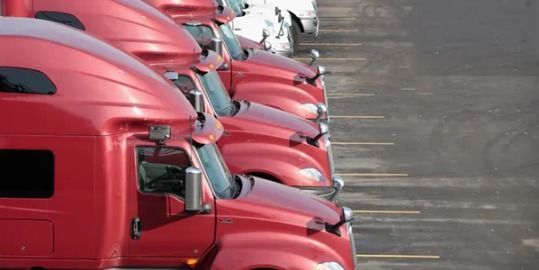What is the Heavy Vehicle National Law and Chain of Responsibility?
What is the Heavy Vehicle National Law and Chain of Responsibility?

Heavy Vehicle National Law (HVNL)
The National Heavy Vehicle Regulator (NHVR) administers one set of laws, the Heavy Vehicle National Law (HVNL) for heavy vehicles over 4.5 tonnes of gross vehicle mass. The purpose of this law is to promote and support the safe and productive transport of goods and people by heavy vehicles. The HVNL consists of the Heavy Vehicle National Law and five sets of regulations.
Chain of Responsibility
Every party in the heavy vehicle transport supply chain has a duty to ensure the safety of their transport activities, whatever their role in the supply chain. Known as the Chain of Responsibility (CoR) the law aims to encourage compliance with road laws and enforce those requirements. Chain of Responsibility (CoR) is a concept that places legal obligations on parties in the transport supply chain. The Chain of Responsibility (CoR) law ensures everyone who works with heavy vehicles – from the business that employs a driver to the place where goods are delivered – is accountable for safety. This means that multiple parties can be held responsible for a breach of the HVNL.
Parties in the Chain of Responsibility
You are a party in the CoR when you perform any of the following 10 functions:
- Employ a heavy vehicle driver (employer)
- Engage someone to drive a heavy vehicle under a contract for services (prime contractor)
- Direct the control and use of a heavy vehicle (operator)
- Schedule the transport of goods and passengers in a heavy vehicle, or schedule a driver’s work and rest hours (scheduler)
- Consign goods for transport by a heavy vehicle (consignor)
- Receive goods delivered by a heavy vehicle (consignee)
- Pack or assemble goods for transport in a heavy vehicle (packer)
- Manage premises where five or more heavy vehicles are loaded or unloaded each day (loading manager)
- Load a heavy vehicle (loader)
- Unload a heavy vehicle (unloader)
You are a CoR party because of a function you perform, not because of a title or job description, or the words of a contract. If you engage in any of the above activities, you or your business are accountable for heavy vehicle safety according to your primary duty.
Fatigue
Driver fatigue or drowsy driving is a safety hazard for the road transport industry. The main causes of fatigue are not enough sleep, driving at night (when you should be asleep), and working or being awake for a long time. It is important to be aware of the signs of fatigue. Under fatigue management laws - ”a driver must not drive a fatigue-regulated heavy vehicle on a road while impaired by fatigue or in breach of work and rest hour requirements.
Speed
Under speed management laws
- “Each party must ensure, so far as is reasonably practicable, the party’s conduct does not cause or encourage the driver of the heavy vehicle to exceed a speed limit applying to the driver.”
- “A person must not ask, a party in the chain of responsibility to do or not do something the person knows, or ought reasonably to know, would cause the driver to exceed a speed limit applying to the driver.”
- “A driver must not drive at a speed over the speed limit applying to the driver for the length of road where the driver is driving.”
Load Restraint
The legal requirements are outlined in the National Transport Commission under the Load Restraint Guide 2018 and the Law requires:
- Load must be restrained to meet the Performance Standards.
- Load must not become dislodged from the vehicle.
- Load must not adversely affect the vehicle’s stability or weight distribution.
Mass and Dimension
Under the mass and dimension laws:
- “Parties in the supply chain must ensure the vehicle, the vehicle’s components and load, comply with the mass requirements (gross and axle) applying to the heavy vehicle.”
- “Parties in the supply chain must ensure the vehicle, the vehicle’s components and load, comply with the dimension requirements (height, width and length) applying to the heavy vehicle.”
Roadworthiness
There are two categories of roadworthiness standards, both of which must be met:
- The prescribed Vehicle Standards
- The other aspects of the mechanical condition of a heavy vehicle that may impact upon the safe use of the vehicle on a road.
Workplace Health & Safety (WHS)
The Heavy Vehicle National Law (HVNL) aligns with model Workplace Health & Safety (WHS) legislation and as with WHS legislation, there is a “primary duty” for every supply chain party to eliminate or minimise potential risks associated with transport activities by doing all that is reasonably practicable to ensure safety.
As with WHS management, this means parties need a Safety Management System.
Zenergy eLearning Program – Chain of Responsibility (CoR) for Owners, Senior Management, Managers
This online course introduces you to the requirements of the Heavy Vehicle National Law (HVNL) and the Chain of Responsibility which promotes and supports the safe and productive transport of goods and people by heavy vehicles. This course provides an overview of the Heavy Vehicle National Law (HVNL) and Regulations, Chain of Responsibility (CoR) primary duties and obligations to ensure so far as is reasonably practicable the safety of your transport activities and an on outline of the Supply Chain parties under the Chain of Responsibility (CoR).
Click on the following link to review further course details: Chain of Responsibility (CoR) for Owners, Senior Management, Managers
Zenergy – Heavy Vehicle National Law and Chain of Responsibility (CoR)
Zenergy experienced consultants can assist in the development of CoR Transport Safety Management System (TSMS) documentation, conducting independent audits of your Management System documentation for management of transport safety, including Chain of Responsibility (CoR), to ensure it meets your responsibilities under the Heavy Vehicle National Law (HVNL).






